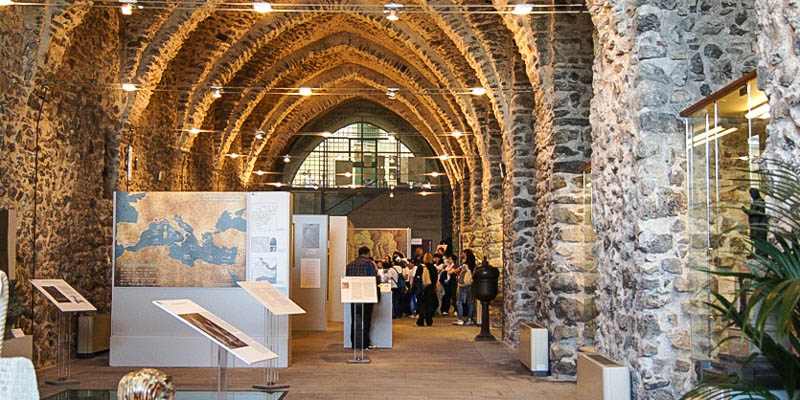- Places
- Plans
- Itineraries
- Experiences


Recently moved from its old location in the city hall to the Arsenale, the impressive vaulted stone halls where Amalfi's ships were once built, the Museo della Bussola e del Ducato Marinaro di Amalfi ("Musuem of the Compass and of the Marritime Dukedome of Amalfi") is dedicated to the city's rich seafaring history.
Pride of place is occupied by the Codice Foscariniano, a 17th century compendium of nautical rules and history that contains one of the earliest examples of the Tabula de Amalpha—or Tavole Amalfitane. These 66 chapters of bylaws and rules, drawn up in Amalfi between the 11th and 14th centuries, represent the world's very first international maritime code, which contineud to act as the common law of the High Seas until 1570.
Among the historical oddments are various antique nautical instruments, some passable paintings by local artists, and traditional costumes for the Regata Storica delle Quattro Antiche Reppubliche Marinare, the hisotrical boat race between Amalfi, Venice, Pisa, and Genova. The race itself takes place the first week in June, rotating between those four host cities (Amalfi will have it next in 2016, 2020, 2024, etc.).

Interestingly, for a while in the 10th to 14th centuries, Amalfi minted its own money from the Ducal papalce. A few of these tarì are on display (appropriately enough, looking a bit like embossed sea shells). They were officialy worth 1/4 a dinar, or a Byzantine coin, and were made of 12 carat gold. For a sense of value, in the 11th century a pergola of vines outside Ravello cost 15 tarì, a three-story seasisde house in Amalfi cost 3,000 tarì, and a comerical sailing ship was valued at 4,000 tarì.
And then there's all the fuss about the compass. Amalfi desperately wishes that its favorite son, Flavio Gioia, invented the compass in the early 1300s. Sorry, Amalfi. No dice. At best, Amalfitani mariners were merely among the earliest European adopters of this well-documented, thoroughly Arab navigational innovation.
Museo della Bussola e del Ducato Marinaro di Amalfi
Largo Cesareo Console 3
tel. +39-089-871-170
Museoarsenaleamalfi.it
Tues-Sun 11am–6pm
€2
Planning your day: It really only takes about 20 minutes, though to peruse everything and read all the placards you might stay 45.
Share this page
Search ReidsItaly.com